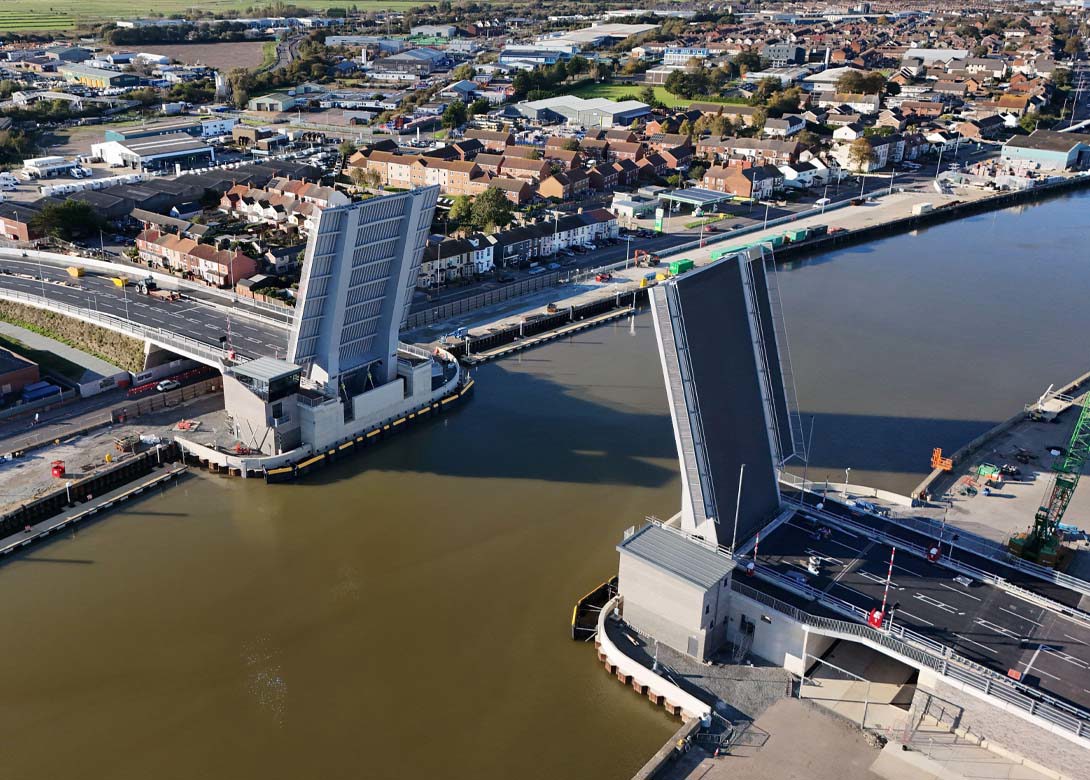
Heavy duty LIEBIG Ultraplus undercut anchors from EJOT UK, which the company states are believed to be the largest mechanical anchors ever used in a civil engineering project, have played a key role in the construction of a bridge in East Anglia.
Constructed by BAM Farrans, the new £121 million Third River Crossing over the River Yare in Great Yarmouth is set to be a catalyst for investment and development in the coastal town. It provides a new link from the A47 to the port and enterprise zone on the east side of the river, easing traffic congestion on the town’s roads, shortening journey times and improving journey reliability.
The double bascule bridge was designed with cofferdams on both banks of the river to house the machinery and mechanisms required to lift, hold and lower each leaf of the bridge, and it was here where LIEBIG heavy duty anchors were deployed.
Working with bridge design specialists Roughan & O’Donovan (ROD) and project engineers Qualter Hall, the LIEBIG Ultraplus undercut anchor from EJOT UK was identified as the preferred solution for this high load application. A series of these mechanical anchors were installed in lengths of 1.09m and 1.45m with an M36 diameter after the hole preparation was completed.
A mix of the two anchor lengths were used on the same baseplates in an unconventional yet successful approach, securing eight baseplates in total – four on each side of the river. Two baseplates on each side of the river were mounted into the ‘lower’ clevis to secure the lifting and lowering hydraulics. The mechanism also features tail locks. These secure the turnbuckles that hold the bridge in its ‘raised and open’ position for prolonged periods, such as for maintenance, and are designed to take loads in excess of 192 tonnes per plate (384 tonnes total) per side.
Explaining how this mix of anchor lengths provided the solution, EJOT UK’s anchoring specialist, Paul Papworth said: “Whilst the ETA (European Technical Assessment) for Ultraplus does not legislate for such a permutation, i.e. using different lengths of anchor in the same baseplate, the ACI (American Concrete Institute) Building Code does because it takes into account the additional area of resistance in the concrete which can be created by the approach. This meant our anchor specification for the Third River Crossing, in conjunction with our advised redesign of the baseplate to allow increased concrete capacity to be achieved, would be approved using a combination of different design codes.”
In addition to the very large anchors used to securely fix the operating machinery in place, a series of smaller M16 and M20 LIEBIG Ultraplus anchors were also deployed to attach the bridge deck’s metal transition plates. These allow for a smooth passage for vehicles and pedestrians between the bridge deck and the newly constructed highway and footpath on either bank of the River Yare.
Chris Griggs, a section engineer who worked on the project, commented: “Paul and his team raised the bar on this project in terms of what we should expect from our anchoring partner, particularly in terms of the toolbox talks and availability onsite to solve any problems throughout the process. It was good to be involved in a project where the anchoring ‘experience’ was refreshingly different, and we have so many positives to take away and apply in our future projects.”

Becca is the latest member to join our team and is eager to get stuck into the world of fasteners. She brings an enthusiastic and fresh outlook on what we do editorially and will be leading our social media activity – including sourcing material, editing articles and posting online.






